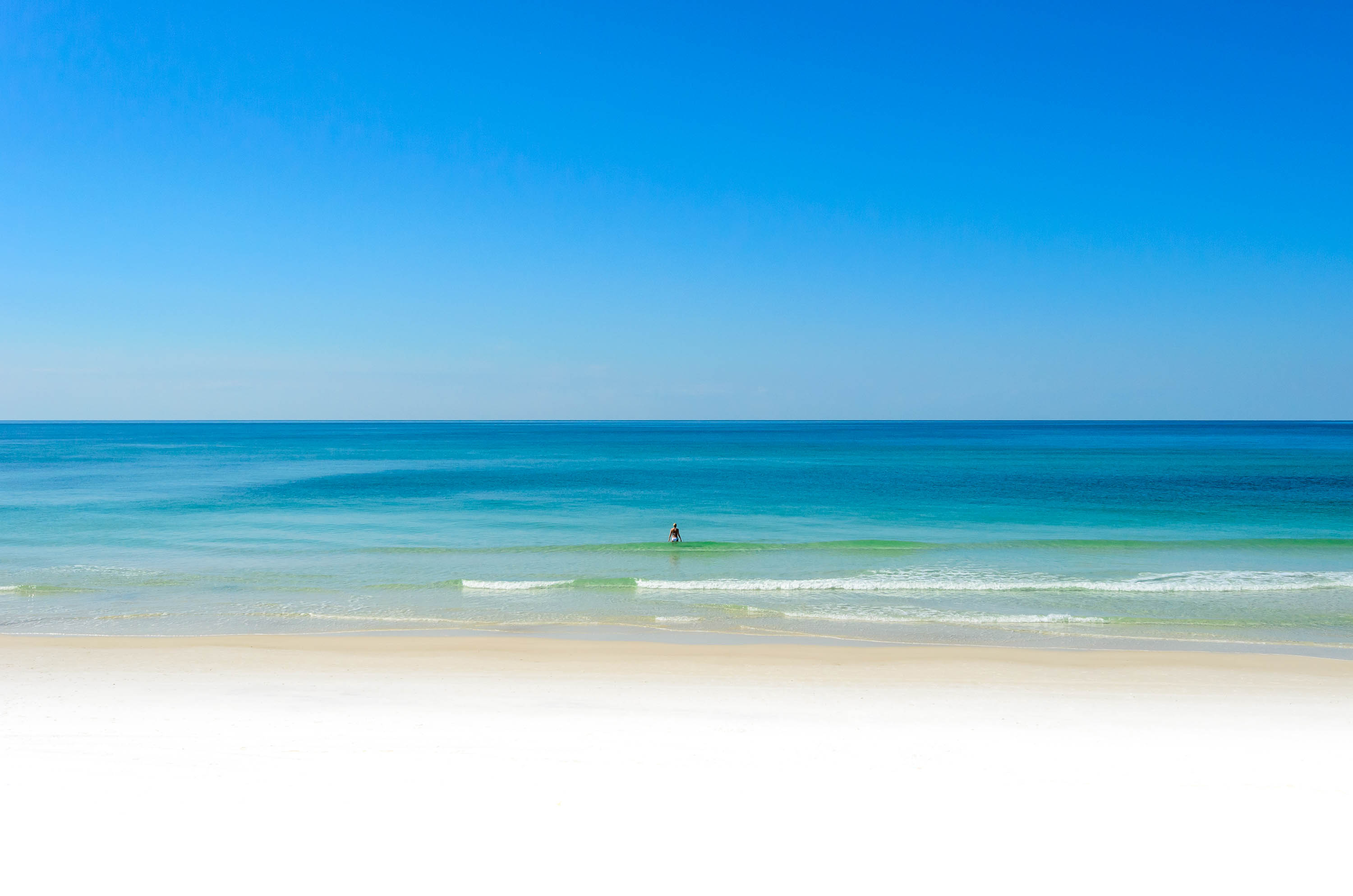Yep. Popcorn popping to watch the other side try to minimize the judgment ruling in response posts...
Court rules for Walton County in lawsuit involving 75-foot public easement on beach, dismisses case [PREMIUM] – The Defuniak Herald & Beach Breeze
Court rules for Walton County in lawsuit involving 75-foot public easement on beach, dismisses case [PREMIUM]
August 14, 2019 Quinton
SURVEY DRAWING showing a 75-foot-wide public easement for pedestrian foot traffic running along the beach in the WaterColor subdivision in Walton County. Dismissed on July 24 was a federal court case in which owners of two lots sought to have the easement voided on their property.
By DOTTY NIST
A federal court judge has ruled in favor of Walton County in a lawsuit combining two separate nearly identical filings by A Flock of Seagirls, L.L.C., and Valentines Heights, L.L.C.
These are Texas limited liability companies, each owning a lot in the WaterColor subdivision in the Beach Lane neighborhood south of CR-30A in the Seagrove community.
Both filed in 2017 in U.S. District Court in Pensacola, the lawsuits had challenged Walton County’s ordinance affirming customary use of the beach by the public. The ordinance had applied to customary recreational uses of the beach by the public, among those sitting on the beach in a chair or on a towel, sunbathing, picnicking, and fishing.
In affect from April 2017 through the end of June 2018, the customary ordinance had been negated as a result a new state law stemming from House Bill 631 (HB 631). The new law took effect on July 1, 2018.
The L.L.C.s’ challenges related to the customary use ordinance had been concerned with allegations of violation of the U.S. Constitution (Taking Clause and Due Process). With these challenges, the plaintiffs sought to have the court declare the customary use ordinance in violation of the Constitution and bar the county from enforcing the ordinance.
This portion of the lawsuits (Count I) had been declared moot after the voiding of the customary use ordinance by state law.
In their lawsuits, the L.L.C. plaintiffs also sought a declaration by the court terminating an existing 75-foot-wide public easement along the beach on their properties, a matter related to state law (Count II).
The two lots owned by the plaintiffs were part of property originally under the ownership of the St. Joe Company and that became subject to the 1995 Topsail Consent Final Judgment. The final judgment established development rights and set conditions for portions of the St. Joe Company’s land in Walton County that were retained by St. Joe when the state acquired parts of St. Joe’s Topsail Hill and Deer Lake properties.
Among the conditions required for St. Joe’s Seagrove area property containing the lots was that with any proposed development, there would be a requirement for the recording of a permanent 75-foot-wide public access easement running laterally above the mean high water line (MHWL) for pedestrian foot traffic.
In 1997, St. Joe also granted to Walton County a 20-foot-wide access easement to the beach from another of the Beach Lane lots. Both the 75-foot-wide lateral easement and the 20-foot-wide access easement to the beach became part of a 1999 resolution by Walton County approving the WaterColor Development of Regional Impact (DRI).
In September 2000, St. Joe conveyed nine lots on Beach Lane (including the two now owned by the lawsuit plaintiffs) to an associated company, St. Joe-Arvida Home Building, L.P., with those lots remaining subject to the county resolution approving the WaterColor DRI and also the terms of the consent final judgment.
In 2002, an easement agreement between the St. Joe Company and Walton County was recorded, combining the 75-foot-wide public access easement along the beach (referred to in the document as the “Beach Easement Parcel”) and the 20-foot-wide beach access easement (referred to as the “Access Easement Parcel”). The purpose of the “Easement,” according to that document, was to provide “the County, its citizens, employees, guests, invitees, and licensees, a way or passage, on or by foot only, over and upon the Easement Parcels.”
The 2002 agreement provided for the construction by the county of a public dune walk-over on the access easement parcel. (This was to become the dune walkover associated with what is now the Van Ness Butler, Jr., Regional Beach Access.)
The 2002 agreement provided for the easements to continue “for so long as the County or its successor or assign shall use the easements for their intended purpose…” The document states that, if the county uses or attempts to use one or both of the easements for a purpose not specified in the agreement, “all rights herby granted shall cease and terminate and all of the County’s interest in this Easement shall revert to St. Joe.”
A Flock of Seagirls had purchased their parcel in 2011 and Valentines Heights had purchased theirs in 2012, with southern property boundaries extending to the MHWL on both lots and the two lots remaining subject to the 2002 easement agreement.
In their lawsuits filed in 2017 against Walton County, the plaintiff parties charged that Walton County’s enactment of the customary use ordinance had violated the 2002 access agreement by expanding or attempting to expand the uses provided for in the access agreement. They maintained that this alleged violation triggered the termination of the rights granted to the county in the agreement.
With both the county and the plaintiffs having filed motions for summary judgment in July 2018, presiding Judge M. Casey Rodgers made the determination that the county’s motion would be considered first. The reason given for this was that the county had raised “jurisdictional arguments.”
Among Walton County’s arguments in its Motion for Summary Judgment was that the plaintiffs had “failed to join indispensable parties St. Joe and the WaterColor Community Association, Inc.” as plaintiffs. (The association had been created in March 2000, two months after the adoption of the WaterColor DRI by the county.)
The county argued that, in the WaterColor declaration documents, St. Joe had “made it clear that the Association and Owners must comply with the Consent Judgment.”
“Therefore, the rights of St. Joe are directly involved in this matter,” according to the county motion.
Walton County also noted that, per WaterColor declarations, no property owner, by virtue of owning property adjacent to the beach or other shoreline, “shall have any right superior to that of other Owners (or the general public, to the extent that the public has a right of access) to use or control,” any beach or other shoreline. The county then referenced a declarations statement that, “All such areas shall be subject to the Association’s control.”
In a July 24, 2019, order, Judge Rodgers rejected Walton County’s argument that only the St. Joe Company, not the plaintiffs would have standing to terminate the easement or pursue legal action to attempt to do so. She found that the easement “ran with the land.” “Its terms both burden and benefit the current owner,” Judge Rodgers wrote, in part, in reference to the easement.
However, she ruled in favor of Walton County’s contention that the WaterColor Community Association, Inc., which had not been joined in the lawsuit, was an indispensable party.
“Because the Easement required by the Consent Judgment spans the entire beachfront neighborhood of Watercolor and includes the 20-foot Access Easement parcel, doing as Plaintiffs request and terminating the Easement as to only the two parcels at issue in this suit would put the non-party Association and the development out of compliance with the Consent Judgment and other governing documents,” Judge Rodgers wrote, adding that the “Easement clearly impacts and is interwined with all other beachfront properties on Beach Lane, as well as the obligations required of the Association.”
After the portions of the lawsuits related to alleged violations of the U.S. Constitution had been declared moot, the remaining count for both lawsuits had been related to the easements, a question pertaining to Florida Statutes. However, the case had been able to remain in federal court. This was because the federal court was considered to retain jurisdiction due to the plaintiffs in each of the cases being citizens of a state other than Florida (Texas). This is referred to as “diversity jurisdiction,” and provisions related to this type of jurisdiction are contained in U.S. Code Title 28, Judiciary and Judicial Procedure.
However, in order for diversity jurisdiction to apply, there is a requirement for complete diversity, with no two plaintiffs in the same lawsuit allowed to be citizens of the same state. Judge Rodgers had made the determination that the WaterColor Community Association, Inc., a Florida corporation, would be an indispensable party, and the joining of that party in the lawsuits as a plaintiff would have negated diversity jurisdiction. (A corporation is considered as a citizen of the state where it is incorporated and does business.)
“Because joinder of the Association would destroy diversity jurisdiction, the case must be dismissed without prejudice,” Judge Rodgers wrote. She noted that the plaintiffs had “adequate remedy” to file in state court.
The plaintiffs’ motion for summary judgment was declared moot, and the case was dismissed.






